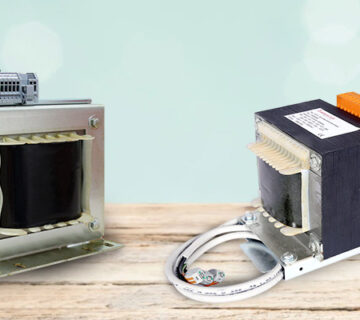In order to guarantee reliable and efficient power distribution, choosing the appropriate three-phase transformer is essential. The performance and cost-effectiveness of your system can be greatly impacted by the transformer you select, regardless of whether you’re working on commercial, residential, or industrial projects. This blog will lead you through the key elements – power requirements, application, efficiency, and more – that you should take into account when choosing a three-phase transformer.
Application and environment
Consider the installation location of the transformer, whether it is to be installed indoors or outdoors. For instance, stronger and more resilient to weather, outdoor transformers frequently need extra enclosures or defence against elements including rain, dust, and extremely high or low temperatures. Similarly, specific criteria apply to different applications. Transformers utilized in industrial environments, for example, would have to endure challenging circumstances like exposure to chemicals, vibrations, or excessive humidity. On the other hand, transformers in commercial buildings might prioritize low noise levels and compact size.
Power requirements
Assessing your power requirements is the first step in choosing a three-phase transformer. This entails figuring out the entire load that the transformer must provide. Kilovolt-amperes, or kVA, is the unit of measurement used to quantify load, which is obtained by adding up the power requirements of all the equipment and devices that the transformer will provide, and dividing it with thousand times the power factor, which is the measure of how efficiently electrical power is being used. The power factor for the majority of industrial loads is typically between 0.8 and 0.9. When estimating power requirements, it’s crucial to also take future growth into account. Your facility’s power consumption may go up over time as a result of new machinery or higher output. You may handle future development by selecting a transformer that slightly exceeds current demands, which will avoid having you to update right away.
Voltage requirements
Choosing the appropriate three-phase transformer requires an understanding of the voltage requirements. Transformers are made to adjust voltage levels to meet the particular requirements of your system or equipment. You must be aware of the requirements for both the input (primary) and output (secondary) voltages in order to guarantee compatibility and best performance. It is crucial to have precise understanding of these voltage levels in order to prevent equipment damage, guarantee safety, and preserve efficiency. Additionally, select a transformer that can handle any future increases in voltage requirements brought on by expansions or modifications to the system.
Efficiency
Transformer efficiency is an important consideration, particularly for large installations where cumulative energy losses can be substantial. Transformers with high efficiency save operating costs and energy losses. Energy efficiency levels or energy loss percentages are common metrics used to quantify efficiency. Seek out transformers that meet efficiency criteria. Although they may cost more up front, higher-efficiency transformers save a lot of money on energy over time.
Impedance
Fault currents and voltage regulation are impacted by transformer impedance. The transformer’s resistance to current flow is measured by its impedance, which is given as a percentage. Although a reduced impedance leads to improved voltage control, it also increases fault currents, which may have an impact on the protective devices in the system. Make sure the impedance value fits your system’s needs and offers sufficient voltage control and fault current management.
Cooling methods
Transformer operation generates heat, and maintaining performance and extending lifespans require efficient cooling. There are two primary cooling methods – air-cooled dry-type transformers and oil-cooled liquid-filled transformers. Air-cooled transformers involve less maintenance requirements, less chance of oil leakage, and suitability for interior installations. However, there are size and capacity restrictions; greater capacities might require forced air cooling. Similarly, oil-cooled transformers incorporate increased efficiency and capacity, superior cooling for larger transformers, and suitability for outdoor installations. But, at the same time, they may leak oil, require constant upkeep, and need to be properly contained to preserve the environment. You must select the cooling method based on your needs for capacity, installation location, and maintenance capabilities.
Price
Although it shouldn’t be your only deciding element, pricing should be taken into account, even if it is the last consideration. Consider the original purchase price, installation charges, maintenance fees, and operational costs when evaluating the total cost of ownership. Although they may cost more up front, high-efficiency transformers may save a lot of money on energy over time.
Guide to selecting a three-phase transformer
Let’s summarize by translating the aforementioned factors into simple guidelines to make things easier for you.
- Assess the application and environment, deciding if the transformer will be used indoors or outdoors, also considering the specific environmental and application-related factors.
- Determine your power requirements by calculating the total load in KVA, and considering future expansion needs.
- Identify voltage requirements by determining the primary and secondary voltage levels required.
- Evaluate efficiency requirements by looking for transformers with high-efficiency ratings. Don’t forget to consider the long-term energy savings versus upfront costs.
- Check impedance levels, ensuring that the impedance is suitable for your system’s voltage regulation and fault current requirements.
- Choose the cooling method, deciding between air-cooled (dry type) and oil-cooled (liquid-filled) transformers based on your requirements.
- Finally, consider the total cost of ownership, evaluating initial costs, installation expenses, maintenance, and operational costs.
However, do not forget to select a reputable manufacturer that has a good customer support and provides warranty. Select a reliable supplier that has a track record of creating transformers of the highest calibre. Take into account elements like warranty, customer service, and spare component availability. Better after-sales support is frequently offered by reputable manufacturers, which is important for preserving the transformer during its operating life. Miracle Electronics is one such three phase transformer manufacturer in India, known for reliable and efficient solutions, with a strong focus on innovation and customer satisfaction, catering to diverse industrial and commercial power needs.




